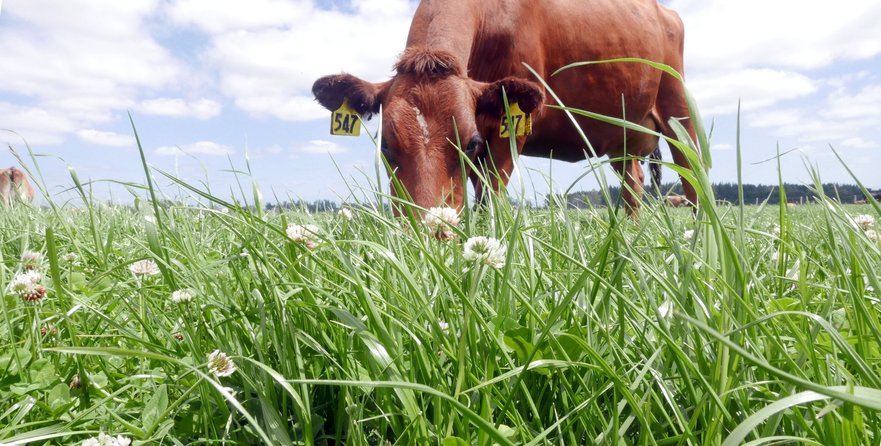Sow and grow your best feed crop ever
What’s the highest yielding feed crop you can grow on your farm?
Maize silage? Fodder beet? Brassicas?
Think again! It’s none of these.
The crop we’re talking about dwarfs even the best of these options, often achieving production of 100+ tonnes of dry matter per ha.
This super-abundant ‘crop’ is new pasture. And if you’re not used to thinking of it in these terms, it’s time for a new perspective.
Give new pasture the same care this season that you give to sowing other crops, and the result will amaze you. It will also do great things for your cows, and your bottom line.
An awkward truth
The way we renew pasture these days is a leading cause of disappointing performance and persistence.
We typically sow forage crops five times more carefully than we sow new pasture. Yet they yield far less over their lifetime. This does not compute!
Why do we, the world’s best pastoral farmers, do this? Because our priorities are wrong. Money and time come first in this scenario; pasture comes dead last.
Drilled in a rush, jammed into tight rows via machines made for very different crops, outsourced to busy contractors, and left to fend for itself – it’s no wonder a lot of new pasture never lives as long as it should, nor reaches its full potential.
Step 1: Take your time
Achieving your best-ever pasture renewal this season starts with slowing down. You cannot rush a 100+ tonne/ha crop of new pasture!
Instead of hustling to get the job done as fast as possible, plan carefully and allow three weeks. If that seems too long, just think about how much time (and money) it takes to re-sow pasture that stops growing properly years before it should.
Investing three weeks to do the job properly is nothing compared to how much you’ll get in return.
Step 2: Set the scene
If you use a contractor, get them on board early so they know you want the job done in a way that’s best for the pasture.
Sowing date, soil and weather conditions, drilling method, seedbed preparation, seed depth, tractor speed – no detail is too small for this discussion. Micromanagement is a strength, not a weakness, with new pasture.
Don’t use a contractor? Review your own timing, technique and priorities the very same way.
Once that seed is sown, there’s no going back to fix things that got missed. More problems with persistence and poor performance start before or at sowing than at any other time during renewal.
Step 3: Respect the soil
Over-cultivating is out for your 100+ tonne/ha feed crop (especially use of PTO-driven equipment in dry conditions).
Without good soil structure, new grass and clover seedlings cannot anchor themselves firmly into the ground.
They’ll struggle for water and nutrients, and may well get yanked out of the ground at the first bite.
Use minimum till to retain soil moisture and integrity, and you win twice, because those newly sown paddocks will also come through their first winter and spring in much better shape. Over-cultivation leaves them so soft they often get pugged to pieces.
Step 4: Drill right
Wide-row drills are no friend to new pasture. Designed for cereals, they leave too much bare ground for weeds to take hold. As soon as that happens, pasture is compromised.
Roller-drill, broadcast, cross or diamond drill, or use a narrow-row drill instead, and enjoy knowing you have spread pasture seed evenly across the soil, minimising weed competition from the get-go.
While we’re talking technique, remember clover seed suffers terribly when it’s shoved into the same tight row as ryegrass seed. It’s smaller, needs to be closer to the surface and takes longer to get going, so if you want a good result, you need to allow for this.
Step 5: Keep watch
To fulfil their potential and live long, healthy lives, those newly-sown pasture seedlings need you to be a helicopter parent, alert for any sign of weeds and pests, and ready to intervene at once if needed.
They also need to be treated with kid gloves through their first and subsequent grazings.
It takes at least 12 months for any new pasture to become fully established, so don’t expect too much, too soon.
What next?
We know this is probably a lot to take in. But it will make a huge difference, we promise.
And if you’d like a hand planning your best-ever pasture renewal this season, just let us know here. We’re always here to help.


